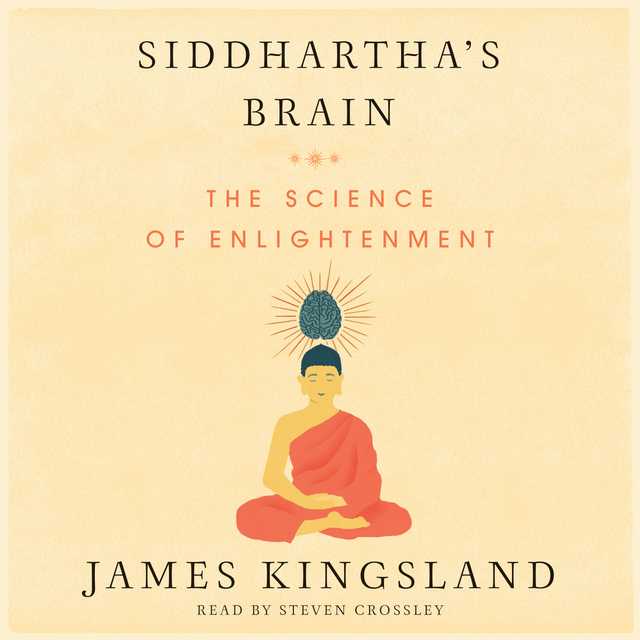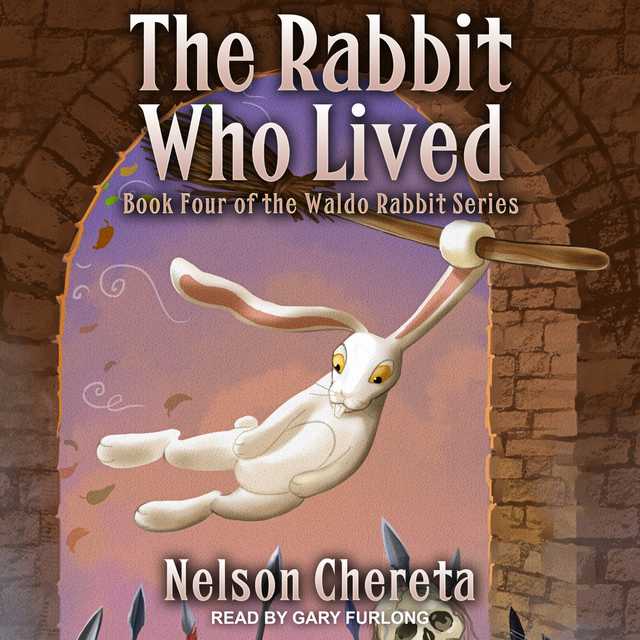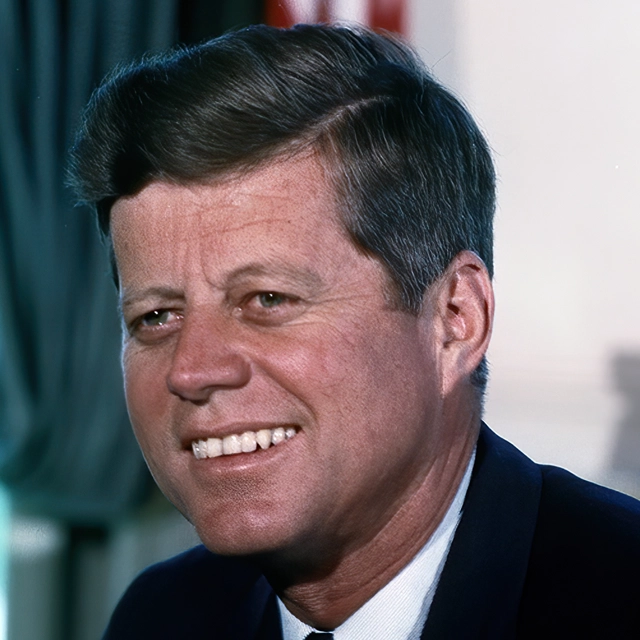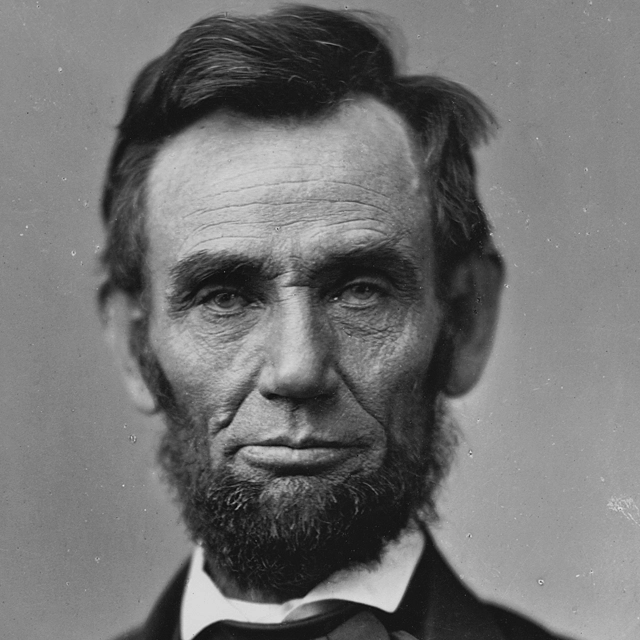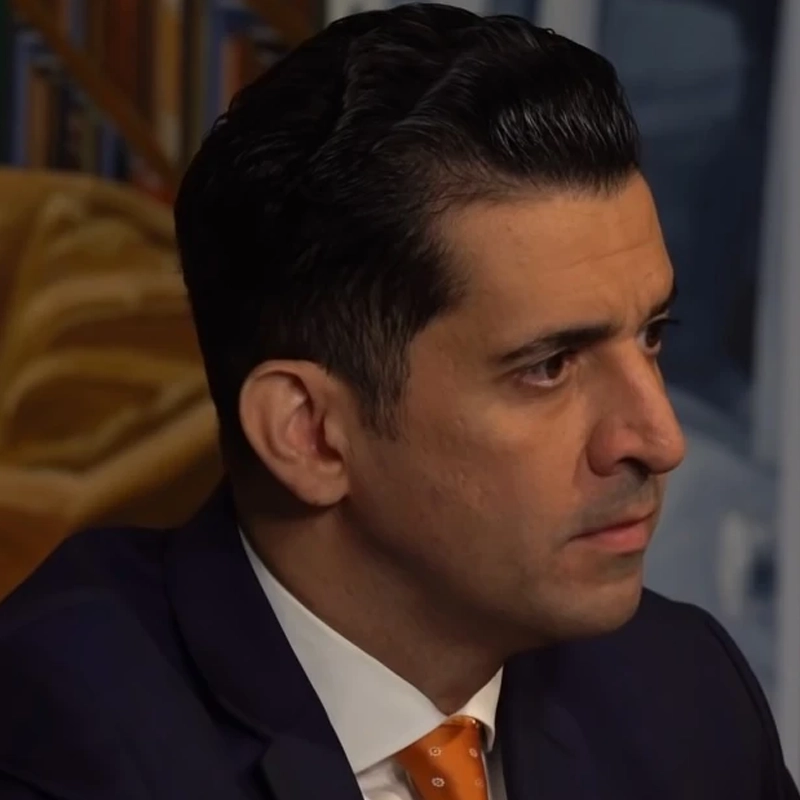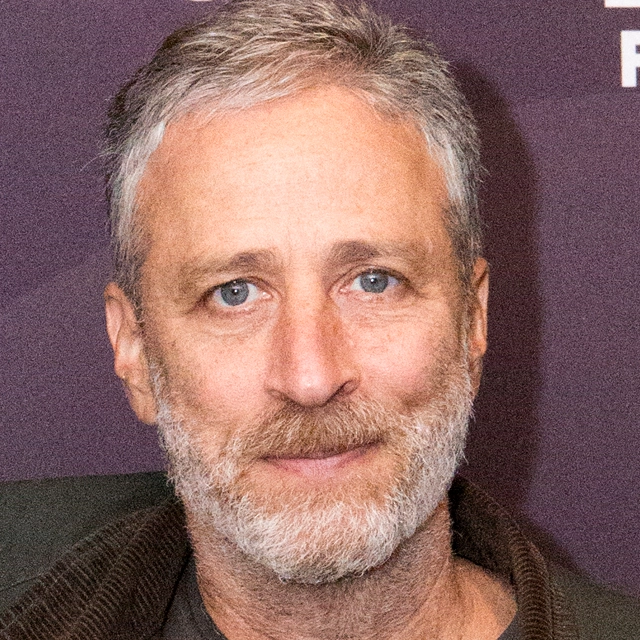Siddhartha’s Brain Audiobook Summary
A groundbreaking exploration of the “science of enlightenment,” told through the lens of the journey of Siddhartha (better known as Buddha), by Guardian science editor James Kingsland.
In a lush grove on the banks of the Neranjara in northern India–400 years before the birth of Christ, when the foundations of western science and philosophy were being laid by the great minds of Ancient Greece–a prince turned ascetic wanderer sat beneath a fig tree. His name was Siddhartha Gautama, and he was discovering the astonishing capabilities of the human brain and the secrets of mental wellness and spiritual “enlightenment,” the foundation of Buddhism.
Framed by the historical journey and teachings of the Buddha, Siddhartha’s Brain shows how meditative and Buddhist practice anticipated the findings of modern neuroscience. Moving from the evolutionary history of the brain to the disorders and neuroses associated with our technology-driven world, James Kingsland explains why the ancient practice of mindfulness has been so beneficial and so important for human beings across time. Far from a New Age fad, the principles of meditation have deep scientific support and have been proven to be effective in combating many contemporary psychiatric disorders. Siddhartha posited that “Our life is shaped by our mind; we become what we think.” As we are increasingly driven to distraction by competing demands, our ability to focus and control our thoughts has never been more challenged–or more vital.
Siddhartha’s Brain offers a cutting-edge, big-picture assessment of meditation and mindfulness: how it works, what it does to our brains, and why meditative practice has never been more important.
Other Top Audiobooks
Siddhartha’s Brain Audiobook Narrator
Steven Crossley is the narrator of Siddhartha’s Brain audiobook that was written by James Kingsland
James Kingsland is a science and medical journalist with twenty-five years of experience working for publications such as New Scientist, Nature, and most recently the Guardian (UK), where he was a commissioning editor and a contributor for its Notes & Theories blog. On his own blog, Plastic Brain, he writes about neuroscience and Buddhist psychology.
About the Author(s) of Siddhartha’s Brain
James Kingsland is the author of Siddhartha’s Brain
More From the Same
- Publisher : HarperAudio
- Abraham
- American Gods [TV Tie-In]
- Dead Ringer
- House of Sand and Fog
- Prey
Additional info
The publisher of the Siddhartha’s Brain is HarperAudio. The imprint is HarperAudio. It is supplied by HarperAudio. The ISBN-13 is 9780062445193.
Global Availability
This book is only available in the United States.
Goodreads Reviews
Tom
December 22, 2021
An excellent look at mindfulness and meditation from a neuroscience POV. Kingsland presents recent findings on brain activity, interweaving them with reconstructed tales of the Buddha's life, speculation on the habits of ancient pre-hominids on the savanna, and present-day goings-on at monasteries and meditation retreats worldwide. For a cynic like me who has long been curious about meditation but who struggles with a strictly spiritual approach, the impartial data from brain scans is very persuasive. And Kingsland's encouraging and excited tone seals the deal by offering the cynic a welcome entry point to get started or further develop their own feldgling practices.4 stars. A book like this seems bound for obsolescence as new findings continue to be made. I also rated it down a hair for some of the sillier analogies. But still, it's highly recommended for those in the market for self-help with a scientific edge, mental health in all forms, and Eastern religious/spiritual practices.
Bernie
December 12, 2016
Kingsland builds his niche by connecting the dots between the teachings of the Buddha and scientific discoveries about meditation and mindfulness. There are many books that tell the life story of Siddhartha Gautama from various perspectives (e.g. famously the books by Hermann Hesse and Karen Armstrong.) There are also a number of books reporting the science of meditation (e.g. Herbert Benson and Sat Bir Singh Khalsa.) However, it’s not so common for the subjects to be overlapped. There’s a reason that this middle path hasn’t been more widely studied. While Buddhism is arguably the most science-friendly of the major world religions, there’s always a gulf between spiritual and scientific thinking. The writer has to figure out how to chart a course through rocky waters. Books appealing to spiritual seekers are likely to come across as insubstantial fluff to the scientifically minded reader, and books appealing to skeptics are likely to feel materialistic and cold (and, perhaps, naive) to the spiritualist. The Buddha’s teachings about the need for the practice to be experiential, rather than faith-based, offers a unique opportunity to tread this tightrope. Furthermore, the Dalai Lama’s willingness to facilitate a dialogue between science and Buddhism has been crucial as well. One can easily set aside controversial issues like reincarnation and karmic law as they aren’t essential to the value of mindfulness. The book consists of twelve chapters. The chapters generally begin with a story or teaching from the life of Buddha, and then go on to investigate the relevant lesson in more detail with particular emphasis on any relevant scientific discoveries that support said teachings. The story of Buddha begins in a wealthy, high-caste household with young Siddhartha Gautama being kept from seeing the effects of aging, illness, and death. When the young Siddartha, nonetheless, sees these things, it is a powerful introduction to the concepts of impermanence and suffering that will play a central role in his future teachings. Chapter 1 starts this introduction and also offers an overview of the book. Chapter two continues it. In Chapter three, Kingsland describes a little of the known history of meditation, though its origins are lost to time. Chapter 4 is entitled “The Second Dart” and it discusses the Buddha’s teaching of the same name—the second dart being one’s mental reaction to an event (i.e. the initial dart.) Chapter 5 investigates the question of whether there is a self—and, if so, of what manner. A core idea within Buddhism is that the self is illusory.Chapter 6 gets to the heart of the matter by explaining the mechanism of mindfulness meditation and what has come to be known as MBCT (Mindfulness Based Cognitive Therapy)—a secular approach to the use of mindfulness to improve well-being. The next chapter tells the story of how a group of fire worshippers came to follow the Buddha after he made clear that everything (their senses, thoughts, and emotions) were aflame with craving, hatred, and delusion, and that springboards into a discussion of how mindfulness is used to reduce craving and addiction. Chapter 8 tells the story of an attempt to kill the Buddha via an angry, drunk elephant, and the Buddha’s thwarting of the plot by way of calm and compassion. As one might have guessed, the chapter is about moderating emotions, just as the Buddha controlled his fear before the elephant. Chapter 9 takes a jaunt into evolutionary biology to question how the mismatch between what humans evolved to do and what we do in the modern world causes mental illnesses and how mindfulness can help mitigate the problem. Chapter 10 is about metacognition, or the ability to observe and reflect upon our own mental experience—i.e. thinking about thoughts. Chapter 11 is about cognition and decision making, and the role that meditation can play in improving our performance in this domain. The last chapter discusses the Buddhist conception of death and enlightenment. It isn’t until this point that there’s a major divergence between the Buddhist and scientific viewpoints. There is a discussion of the Buddha’s teachings emphasizing that belief in ideas from on high is not so important as experience. Six of the chapters (2, 4, 6, 8, 10, & 11) are concluded with guided meditations to offer the reader an introduction into the basics of mindfulness. These are simple practices that many readers will already be familiar with in some variant or another. (e.g. breath awareness, bodily awareness, and mindful eating.) There are only a few graphics (e.g. maps and diagrams—mostly of the brain) but there is no need for additional graphics. The book has references annotated. I found this book interesting and thought-provoking. It uses the stories of Buddha as well as some stories from the present day to make the reading more engaging and approachable. The discussion of scientific research is easy for a neuroscience neophyte to follow. I’d recommend this book for anyone interested in learning more about the science behind Buddhist practices.
Arlitia
July 10, 2016
This is one of the nerdiest books I've read in a long time--and it was absolutely fascinating. It got a bit technical at times, I'll admit, what with all that brain mapping and description, but I stuck with it, because the message of the book is one I think is important and one I think the author makes very clear. Meditation, or mindfulness if you're squidgy about using the word meditation, has profound effects on the brain, mentally and physically. There is mainstream science to back this up, and there are a multitude of Buddhist monks and nuns and practitioners around the world who have known this for centuries. Kingsland gives voice to both paths of knowledge. This is not a self help book, or a self indulgent memoir or any kind of spiritual journey, at all. It is reporting on what is now known about mindfulness and some tips on how to achieve it for anyone who is curious. Or if you're not curious, read the book, and see what it awakens in you.
Jonathan
August 06, 2019
This is an extraordinarily comprehensive book on the subject of meditation.
P Michael N
July 31, 2018
Buddhism meets science - fantastic book. There are so many thought provoking bits in this book. One interesting observation is that we come into this world with nothing and yet we feel cheated by death. That’s tied in with our attachment to things and this sense of immortality of ‘self’ we have. We know that life is impermanent intellectually but our actions don’t always reflect this.The book is a down-to-Earth look at the life of Siddhartha, the enlightened teacher who founded Buddhism. It’s also an attempt to understand what changes happened and continue to happen when people practice meditation.The book summarises the advantages of meditation as helping us attain/achieve: calmness of mind, concentration or focused attention, mindfulness, investigation or experimentation with cause and effect, energy to see our projects through, equanimity and happiness or rapture.Great book for anyone curious about the benefits of meditation from a scientific and practical perspective.And remember, as the book says, people who try to multi-task suffer from multi-tasking addiction disorder. Don’t go MAD trying it!
Nishant
November 05, 2017
The book is astounding. It is clear and precise and answers so many questions to scientific tempered mind. I cannot say I was surprised with the correlation of science with religious procedures, that people practice without the knowledge as it is passed down to us by our ancestors. I had always been a believer in the procedures followed by religious groups (though they follow it as a guide or a compulsion which is wrong) as I believe that there is no smoke if there is no fire. I will come back to this book for a re-read. It is fascinating how most of all human internal development structures are founded in India and around that area. I believe that internal structures bring in happiness and joy and all the things people actually crave for. If consciousness strikes to people I think they can actually see through the blinders of outside world.
Frank
January 27, 2018
From the cover, I expected this to be a book about approaching the ancient teachings of Buddhism with modern day understanding of the brain. It was much more than that.The author collects together the findings from many different studies with the insight of many modern day teachers of Buddhism and meditation for a compelling presentation of the relationship between buddhist philosophy, meditation, mental health, and how all of these things can be observed in the brain. Some of what he presents has been proven and some is conjecture supported by what has been discovered so far, with each clearly presented as one or the other.I expected to learn about the workings of the brain, and I did. I also learned about mental health, and even some things about Buddhism that were new to me. This was an enjoyable and rewarding read.
Metodi
February 08, 2020
I received the book as a gift from a friend and it sat in my library for well over half a year. It is not because I was not interested in the subject. Rather, deep inside, I was fearing that the book might be promoting some sort of a “quackery” that I usually associate with books on similar topics. When I decided that its time has come, I found out that I should have paid more attention to the subtitle: “The Science of Meditation, Mindfulness and Enlightenment.” Or at least I should have noticed the word “science.” Well, certainly the entire book is about science – mostly neuroscience and psychology. Note to all the skeptics: the book promotes mental health. Maybe the author and the publisher could have included this somehow on the front cover (or at least something with “psychology”) so I had to read the entire introduction in order to get some sort of a relief that it is not one of those books.Moreover, this is one of the most helpful books that I have read. Its messages are crystal-clear:1. Mental illnesses are not clear-cut categories;2. Nobody is completely healthy nor completely ill;3. Manifestations of different illnesses can overlap, coexist, cross-interact;4. Self-guided mental practice is sometimes more beneficial than medication or psychotherapy;5. Buddhists have discovered a way to counter manifestations of illnesses;6. These practices can remain devoid of religious implications.The book is based on lots of scientific research to back-up its tenets. It is full of explanations of the different regions of the brain, their (supposed) functions and how to influence them with your mind to be healthier. It contains six guided meditation practices that are good for beginners.I have two main criticisms about the book:1. Although several times the author points to the non-existence of an “eternal Self” (soul), in chapters 11 and 12, he talks about two things that irritated my internal militant atheist: that science cannot “disprove the existence of heaven, hell, gods, angels [...]” (p. 238) and that there might be some kind of a “rebirth.” To me, these statements are out-dated and irrelevant;2. The author does not treat in detail the topic of social inertness. According to my recollections, he mentions on two occasions only that by having a peaceful and accepting mind does not mean that one becomes socially disengaged. My question is: does mindfulness make you care less about what is happening around you? The author has shamelessly avoided answering this question with arguments. He simply says: “No, it does not.”Anyways, this is a brilliant book. Well-researched and well-written. I enjoyed the fable-wise framing model of each chapter.
Will
September 19, 2022
I think most would describe this book as an attempt to tie Buddhist ideas to modern neuroscience, with the implication that science might give extra credence to the more spiritual ideas.However, I think that the opposite is the truth: this book is more about how far behind modern neuroscience really is. While researchers study the instruments, monks study the symphony. They’ve been listening for millennium.~This body is a painted image, subject to disease, decay and death, held together by thoughts that come and go. What joy can there be for those who see their white bones will be cast away like gourds in the autumn?~
Lindsaymadelaine
July 21, 2020
This book was very informative about how the brain works, and how meditation can help with some of the common issues people have. It has definitely inspired me to meditate more, and aim to live more mindfully...especially in the anxiety/depression evoking world of today! I especially liked the variety of the way this book was written; it blends Buddhist stories, heavy scientific neuroscience info, and personal insights which makes the concepts easy to understand.
Charlotte
October 16, 2020
Interesting both from the scientific pov but also from a lot of historical data about Siddhartha and the world that he came from. It got me meditating again, so that has to be a bonus.
Joey
March 31, 2017
This book was a warm read. It presented quality studies about mindfulness that embraced scientific brain imagery.I especially liked the insight about Lewis Carroll (I never knew he was a mathematician) and the connection to Alice in Wonderland. "Their creator, the Victorian mathematician Lewis Carroll, had the kind of analytical, scientific mind that relished this sort of exercise. Like the Hatter and March Hare, we too have the capacity for unassailable logic, something aggressive, irrational, and perhaps even a little silly- like trying to stuff a sleepy dormouse into a teapot." (204)Kingsland's approach and explanation of metacognition was impressive. Metacognition is probably one of the most important things I learned about in graduate school.The reference to Sam Harris' Waking Up rang a bell because I recently read it. I must admit, even though I didn't like that book, I later realized that the cover of clouds actually made the shape of a face!Kingsland's guided meditations were congruent with a lot of the Headspace techniques hosted by former Buddhist monk, Andy Puddicombe. This book also reflects upon multiple variants of meditation practices. Unlike my father's belief system chained to the teachings of Prem Rawat, I believe that there are a variety of meditative practices that can be helpful to a wide variety of people. There is not one single way to meditate. The goal is always finding clarity within one's self and feeling content and fulfilled.
Jennifer
April 02, 2016
“Siddhartha’s Brain” is a fascinating look into the human brain and how meditation can have an impact on the way the brain works. Using the latest in scientific research, Mr. Kingsland has opened the door to understand how the meditation practices of Buddha worked to literally change the way his brain worked. The book starts off by laying a foundation of the various areas of the brain that process our perceptions and prompt us to act in think in certain ways. The author then goes into the research of meditation and describes the impact that meditation appears to have on the brain structures and how that impact changes our perceptions and thinking processes. Along the way, the author ties in relevant Buddhist teachings and reveals that Buddha was way ahead of his time in his understanding of human thinking.I found this book to be relatively easy to read, though some chapters have more scientific terminology than others and that may prove daunting to some readers. This book is best for readers who have an interest in the structure and function of the brain, or those who desire a greater understanding of meditation from a scientific perspective.
Marie
December 31, 2021
A wandering mind is the cause and not merely the consequence of unhappiness.Buddhism is not a belief system but the investigation of one's mind.Stop and simply be.Can't change what's happening, but we can change how we relate to it.Renounce and enjoy.There is no such thing as multitasking, the human mind has only a single channel of attention and can only focus on one job at a time. Any impression of multitasking is a result of your brain rapidly toggling between different tasks without messing up.Accept the way things are.
Lucie
April 29, 2016
A very interesting book to learn more about our brain and meditation. I've enjoyed the way it was written through examples and excerpts to help you with perspective and meditation.It's always difficult to explain why it has touched me as I've turned the pages early to know more about the author words and Siddhartha's storie. If you are interested in Buddhism, meditation and mindfullness, it will be a good one for you.A really good read!Luciehttp://newbooksonmyselves.blogspot.fr...
Frequently asked questions
Listening to audiobooks not only easy, it is also very convenient. You can listen to audiobooks on almost every device. From your laptop to your smart phone or even a smart speaker like Apple HomePod or even Alexa. Here’s how you can get started listening to audiobooks.
- 1. Download your favorite audiobook app such as Speechify.
- 2. Sign up for an account.
- 3. Browse the library for the best audiobooks and select the first one for free
- 4. Download the audiobook file to your device
- 5. Open the Speechify audiobook app and select the audiobook you want to listen to.
- 6. Adjust the playback speed and other settings to your preference.
- 7. Press play and enjoy!
While you can listen to the bestsellers on almost any device, and preferences may vary, generally smart phones are offer the most convenience factor. You could be working out, grocery shopping, or even watching your dog in the dog park on a Saturday morning.
However, most audiobook apps work across multiple devices so you can pick up that riveting new Stephen King book you started at the dog park, back on your laptop when you get back home.
Speechify is one of the best apps for audiobooks. The pricing structure is the most competitive in the market and the app is easy to use. It features the best sellers and award winning authors. Listen to your favorite books or discover new ones and listen to real voice actors read to you. Getting started is easy, the first book is free.
Research showcasing the brain health benefits of reading on a regular basis is wide-ranging and undeniable. However, research comparing the benefits of reading vs listening is much more sparse. According to professor of psychology and author Dr. Kristen Willeumier, though, there is good reason to believe that the reading experience provided by audiobooks offers many of the same brain benefits as reading a physical book.
Audiobooks are recordings of books that are read aloud by a professional voice actor. The recordings are typically available for purchase and download in digital formats such as MP3, WMA, or AAC. They can also be streamed from online services like Speechify, Audible, AppleBooks, or Spotify.
You simply download the app onto your smart phone, create your account, and in Speechify, you can choose your first book, from our vast library of best-sellers and classics, to read for free.
Audiobooks, like real books can add up over time. Here’s where you can listen to audiobooks for free. Speechify let’s you read your first best seller for free. Apart from that, we have a vast selection of free audiobooks that you can enjoy. Get the same rich experience no matter if the book was free or not.
It depends. Yes, there are free audiobooks and paid audiobooks. Speechify offers a blend of both!
It varies. The easiest way depends on a few things. The app and service you use, which device, and platform. Speechify is the easiest way to listen to audiobooks. Downloading the app is quick. It is not a large app and does not eat up space on your iPhone or Android device.
Listening to audiobooks on your smart phone, with Speechify, is the easiest way to listen to audiobooks.

